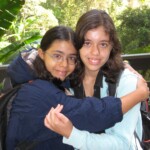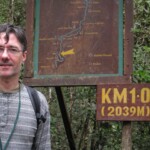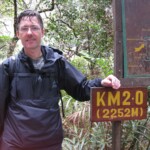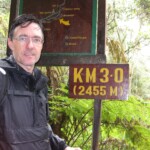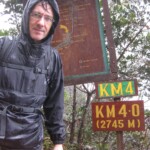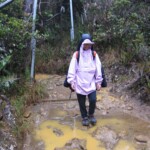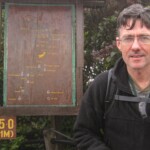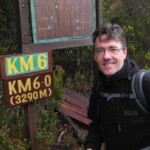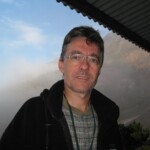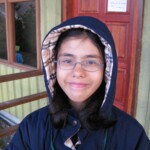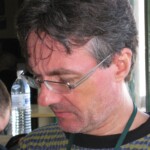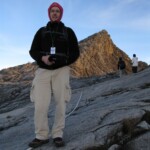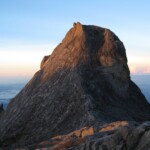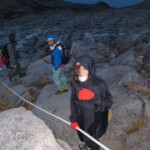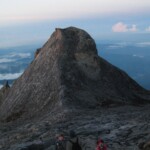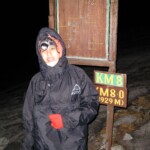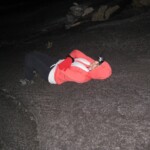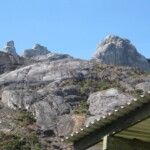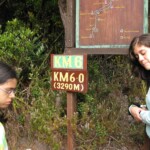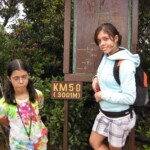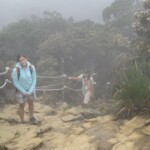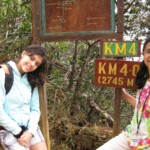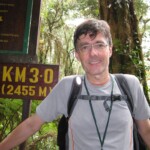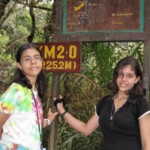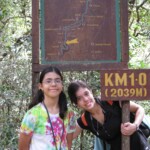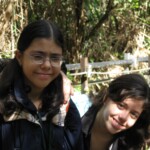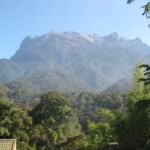Out of Aceh’s experience, hope for rebuilding Haiti
By Joachim von Amsberg, published in the Washington Post, January 29, 2010
 The official death toll of the recent earthquake in Haiti is more than 110,000. That tens of thousands more may have been killed puts this tragedy on par with that wrought by the tsunami that struck South Asia in December 2004, killing about 200,000 people and displacing more than half a million just in Indonesia’s Aceh province. There are other parallels between these disasters. Haiti is a poor country long plagued by governance issues. Even though Indonesia is a well-functioning state, Aceh at that time had been ravaged by decades of conflict between the Indonesian government and Acehnese groups fighting for independence. Whatever government had existed in Aceh was severely diminished by the tsunami.
The official death toll of the recent earthquake in Haiti is more than 110,000. That tens of thousands more may have been killed puts this tragedy on par with that wrought by the tsunami that struck South Asia in December 2004, killing about 200,000 people and displacing more than half a million just in Indonesia’s Aceh province. There are other parallels between these disasters. Haiti is a poor country long plagued by governance issues. Even though Indonesia is a well-functioning state, Aceh at that time had been ravaged by decades of conflict between the Indonesian government and Acehnese groups fighting for independence. Whatever government had existed in Aceh was severely diminished by the tsunami.
Yet Aceh today is a vibrant place where families live in houses and communities, children attend school and farmers tend to their fields. Its reconstruction is widely recognized as a success, and that work could offer a silver lining for Haiti.
In Aceh, about 140,000 houses have been rebuilt, 2,500 miles of roads have been constructed, and 200,000 small and medium-size businesses have been supported. Indonesia concluded an agreement seven months after the tsunami with the independence fighters that gave important autonomies to Aceh in return for a peace that has lasted. That pact laid the foundation for the investment and economic development that have taken place.
While the memories of the tragedy linger, what can be rebuilt has been rebuilt. In numerous trips to Aceh over the past 2 1/2 years, I have seen enough redevelopment and spoken to enough local people to know that Aceh has been built back better than it was before the tsunami. Today, Aceh has functioning local and provincial governments that work together with the national government to provide services for its people. There is a functioning state in Aceh. By no means is it flawless, but it holds promise for more social and economic progress and development.
Aceh’s experience provides hope that at least the physical and economic damage from natural disasters can be overcome. Hope that out of the desperation of disaster can come the desire for reconciliation after conflict and for establishing an effective state or nation that can address the challenge of rebuilding. No two disasters are the same, but a few keys to success from the Aceh tsunami reconstruction experience should be kept in mind as international support is channeled to Haiti:
First, local and national leadership count. While Aceh’s local government was decimated, Indonesia’s national government led the recovery and reconstruction efforts. The president appointed a personally trusted, experienced leader to manage the reconstruction and created an agency with overarching powers to coordinate billions of dollars of investments by 350 organizations in 12,500 projects. International partners may have to take the lead in Haiti during a transition period, but there is no substitute for national leadership in the long run.
Second, empowering people is key. In Aceh, strong top-down leadership was complemented by the empowerment of the people and communities. Victims became development workers. Aid recipients and former combatants became community facilitators. Displaced families became workers who rebuilt their houses. By channeling a large share of reconstruction funds directly to communities, the people of Aceh’s problems were transformed as they became part of the solution. Their hard work meant that houses were built faster, at a lower cost, and better met the needs of the people.
Third, coordinating global aid is critical. International development partners supported reconstruction through coordinated approaches that were aligned behind government leadership and Aceh’s priorities. Fifteen donor countries and donor organizations pooled $700 million in a multi-donor fund administered by the World Bank. Instead of 15 separate housing and road projects with different procedures and criteria, which would have overstretched the limited capacity of local institutions, one well-coordinated program was implemented by communities, government and U.N. agencies, and respected nongovernmental organizations.
There are, of course, many differences between Haiti today and Aceh five years ago. But as we found in Aceh, recovery is possible. The first priority, as it was after the tsunami, is the vast humanitarian task that is underway. But if the international community comes together, aligns its efforts and coordinates support that prioritizes the interests of the people affected by disaster and puts them in the driver’s seat, Haiti’s future can look much brighter than its past ever did.
Joachim von Amsberg, the World Bank’s country director for Indonesia since 2007, oversees the bank’s management of the Multi Donor Fund for Aceh and Nias.
Happy New Year 2010!
 Hard to believe that another year passed already… so quickly.
Hard to believe that another year passed already… so quickly.
2009 was the second year of an international financial crisis that Indonesia managed and weathered remarkably well–all things considered. A year during which Indoensia also went through an impressive democratic process that showed maturity and created the prospect of rapid social progress for years to come, as the result of political stability, good economic management, and effective leadership.

The year 2009 ended with the COP15 at Copenhagen. On the one hand, there was utter failure to achieve the binding global agreement on curbing GHG emissions that many had–probably unrealistically–hoped for. On the other hand, the coming together of more than a hundred heads of states and thousands of other leaders to discuss the global commons is an unprecedented success in mobilizing global awareness and hopefully eventually action. I remember, just 20 years ago, few of us discussed climate change and even fewer dared dreaming about global treaties and a global carbon trading system that would deal with the acute threats to the health of our planet. Now these topics are at least on top of the global agenda. In the end, we need to recognize that it takes time to create the kind of global ethics that is needed to deal with global challenges at an unprecedented scale.
I am happily spending the end of the year together with three happy and healthy young daughters who are growing up very quickly. Here they are… together with cousins and other German relatives.
I wish you a very happy, successful, fulfilled, and healthy 2010!
Happy Holidays!
 We wish all of our family and friends very Happy Holidays and a wonderful, successful, and healthy New Year! Daddy and Daughters are enjoying wintery holidays in Germany (Berlin, Lueneburg, and the Black Forest) with the German family.
We wish all of our family and friends very Happy Holidays and a wonderful, successful, and healthy New Year! Daddy and Daughters are enjoying wintery holidays in Germany (Berlin, Lueneburg, and the Black Forest) with the German family.
Arriving in Freezing Berlin


Dad and three girls arriving in Berlin in lots of snow but without our suit-cases . The first snow for the girls in seven years! How about that? Can you believe that? Now we are ready to celebrate Christmas with cousins and grandparents… Snow is so much fun! Espencially when you don’t have it every year… Click here if you’d like to see more pictures of our Germany trip.
Selamat Idul Adha and Happy Thanksgiving!
Enjoying Daddy and Daughters Day (DDD) and wishing everyone Selamat Idul Adha and Happy Thanksgiving…
New Photos Posted

It has taken me a while, but during a weekend in DC, I finally managed to post photos from the last couple of years. Please have a look at Recent Pictures. I will try to keep this picture gallery updates.
Three Girls Hiking in North Sumatra in 2008

Selamat Eid ul Fitri
I would like to wish you a blissful Eid ul Fitri: Selamat Hari Raya Idul Fitri 1 Syawal 1430.
Have a safe trip for you who are going “pulang kampung. Enjoy the holiday festivities and time with family. For all of you who are taking advantage of the celebration, enjoy your time off.
With warm wishes, Joachim
Welcome to this updated website!

Welcome to our updated website. I will try to post more frequently here than I have in the past. On the right you will find links to parts of our old website.

